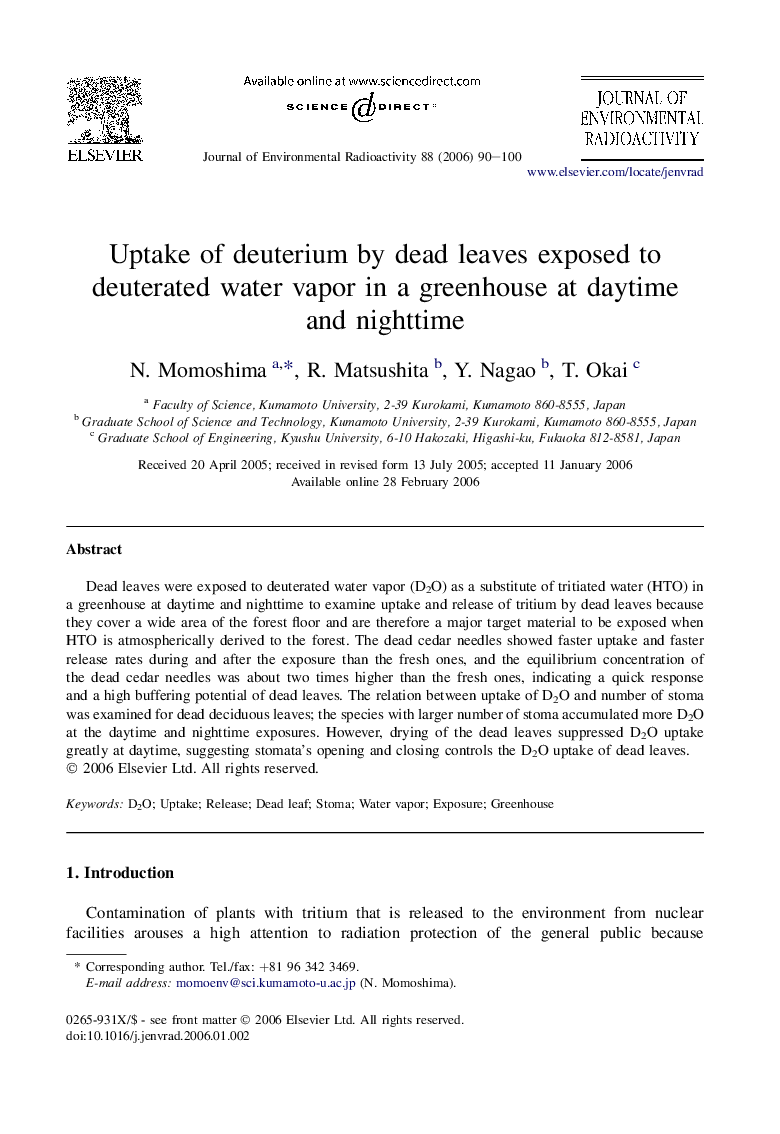| Article ID | Journal | Published Year | Pages | File Type |
|---|---|---|---|---|
| 1739476 | Journal of Environmental Radioactivity | 2006 | 11 Pages |
Abstract
Dead leaves were exposed to deuterated water vapor (D2O) as a substitute of tritiated water (HTO) in a greenhouse at daytime and nighttime to examine uptake and release of tritium by dead leaves because they cover a wide area of the forest floor and are therefore a major target material to be exposed when HTO is atmospherically derived to the forest. The dead cedar needles showed faster uptake and faster release rates during and after the exposure than the fresh ones, and the equilibrium concentration of the dead cedar needles was about two times higher than the fresh ones, indicating a quick response and a high buffering potential of dead leaves. The relation between uptake of D2O and number of stoma was examined for dead deciduous leaves; the species with larger number of stoma accumulated more D2O at the daytime and nighttime exposures. However, drying of the dead leaves suppressed D2O uptake greatly at daytime, suggesting stomata's opening and closing controls the D2O uptake of dead leaves.
Related Topics
Physical Sciences and Engineering
Energy
Nuclear Energy and Engineering
Authors
N. Momoshima, R. Matsushita, Y. Nagao, T. Okai,
